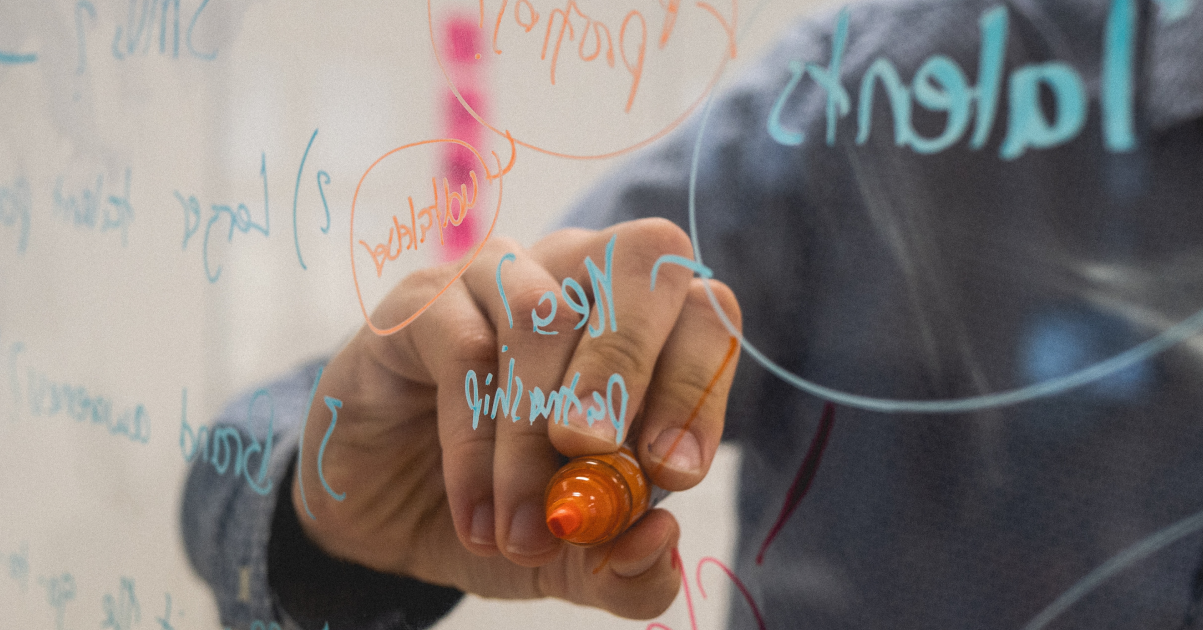
最近、デザイナーの役割の変化について盛んに議論されています。デザイナー(あるいはデザインリサーチャー)の新しい役割のひとつとされるのがファシリテーターです。「コ・クリエーションのプロセスにさまざまなステークホルダーを参加させること」に関心が高まる中、コラボレーション、アイディエーション、そして意思決定が求められるグループセッションにおいても、デザインを専門的に学んでいない参加者をサポートする必要が出てきました。
ファシリテーターの役割とは?
デザイナーは、新たなユーザーを獲得するためのフォーカスグループやコ・クリエーションワークショップなど、同じ目的を持つグループにおいてファシリテーターとして振る舞うことがあります。しかし、コ・クリエーションへの関心が高まるにつれて、さまざまな分野の参加者が集まって複雑な課題に取り組むグループセッションにおいて、デザイナーがファシリテーションを頼まれることが多くなってきました。異なるバックグラウンドや異なる目標を持つ組織を代表する参加者がいる場合には、特にその傾向があります。こういった場合、ファシリテーションは非常に難しく、ファシリテーターとしての高度な専門技術が要求されます。
ファシリテーターはグループセッションの目的を理解していなくてはいけません。情報やリソースを共有することなのか?コラボレーションすることなのか?何かを決定することなのか?問題を解決することなのか?それとも新しいアイデアを生み出すことなのか?目的ごとに異なるファシリテーションプランが必要ですが、たいていのグループセッションには複数の目的が存在します。経験豊富な進行役が主な目的を達成するためのプランを立てますが、万一に備えて、別のプランも準備しておかなくてはなりません。
ファシリテーターに相応しいのは?
組織内の人なら誰でもファシリテーターになれますが、「優れた」ファシリテーターになるためには豊富な経験が必要です。ファシリテーターとグループセッションの参加者との相性も大切です。例えば、年齢や性別について十分に考慮する必要があります。
優れたファシリテーターになるために必要な能力やスキルとは?
ファシリテーターの最も重要なスキルは聞き上手であることです。注意深く、そして共感を持って参加者の話を聞くことです。ファシリテーターは、話を聞きながら同時に考えることもできなくてはなりません。参加者に話をさせ共同作業をさせることがその役割だからです。時には沈黙が生まれることもあります。例えば、誰かが何を言おうかと考えていたり、数人で何かの作業をしている時などです。そういう時に無理に話をして沈黙を破る必要はありません。
優れたファシリテーターは、グループセッション用に設けられた時間枠の中で、合意した議題に従って系統立った思考をすることができます。また、議論をリードしたり自分の意見を共有したりしません。ファシリテーターは、ほかの参加者の見解を引き出し、視覚化するためにそこに居るのです。優れたファシリテーターは会話を引き出し、継続させながら同時にコントロールします。
ファシリテーターは、すべての参加者が重要かつユニークな意見を持ってセッションに参加していると、固く信じていなくてはいけません。さらに、優れたファシリテーターはグループのダイナミクスをコントロールし、参加者全員に自分の考えや感じていることを発言する機会を与えることができなくてはなりません。時には、口数の少ない参加者の意見を聞き出す必要もあります。
ファシリテーションのスキルは教科書や講義、Youtubeのビデオから学習することはできません。実践あるのみです。このスキルを習得するには何年もかかります。自分のファシリテーションに自信を持つには場数をこなすしかないのです。自信がなければ、参加者がそれを敏感に察知して、セッション自体がうまくいかなくなるかもしれません。経験を積むには、アシスタントから始めて経験豊富なファシリテーターに成長していく方法があります。
優れたファシリテーターの「その他の条件」とは?
ファシリテーターには、一定の作業を任せられるアシスタントが必要です。アシスタントがいて初めてファシリテーターはグループのニーズをサポートできるのです。アシスタントはメモを取り音声を録音して、セッションの議事録を作成します。アシスタントは、セッションをスケジュール通り順調に進めるためにファシリテーターが必要とするものを、準備します。
グループセッションを開く場所は、参加者を歓迎する雰囲気があり、心地良いこと、そして動き回れる広さがあることが大切です。美味しい食べ物も必要です。歓迎されている雰囲気を作るのは、開催場所の物理的な条件だけではありません。ファシリテーターがセッション参加者を歓迎し、互いに心地良く感じるように仕向けることも重要です。
ファシリテーションを学ぶために役立つリソースは?
私の知っているベストなファシリテーター学習リソースは、Group Works Card Deck(グループ作業カードデック)です。優れたファシリテーターが習得し実践している内容を、100枚のカードに表示しています。このカードはさまざまな組織的バックグラウンドを持つ50人以上のボランティアが、グループセッションを成功に導くための知恵を出し合い、3年以上かけて作成しました(Group Pattern Language Project)。
この記事で説明したポイントを表示したカードを含む全カードデックは次のサイトから
購入またはダウンロードできます。
http://groupworksdeck.org
There has been discussion recently about the changing roles of designers. One of these new roles is the designer (or design researcher) as facilitator. With the increased interest in bringing various stakeholders into the co-designing process comes the need to support those who are not trained in design during group sessions that require collaboration, ideation and decision-making.
What do facilitators do?
Sometimes designers serve as facilitators for a group of like-minded people. This is the situation for focus groups or co-design workshops with future users. But with the rise in interest in co-designing, designers are increasingly being asked to facilitate group sessions where diverse people have been gathered to address complex challenges. It is often the case that the people are from different backgrounds and have different goals for their organizations. This is a most challenging type of facilitation and requires a high degree of expertise in a facilitator.
The facilitator must understand the objectives of the group session. Is it to share information and resources? Or is it to collaborate? To resolve issues? To solve problems? Or to generate new ideas? Each of these objectives will take a different facilitation plan and most group sessions will have multiple objectives. The experienced moderator must come up with a plan to address the key objective(s) but also have other plans in their "back pocket" just in case they are needed.
Who can be a facilitator?
Anyone in the organization can be a facilitator but it takes a lot of practice to be a good facilitator. The match between the facilitator and the people in the group session is also important. For example, age and gender should be carefully considered.
What are the abilities and skills needed to be a good facilitator?
The most important skill is that the facilitator is a good listener. This means that they listen attentively but also with empathy toward the participants. The facilitator must be able to listen and think at the same time. Their role is to get the participants talking and working together. Sometimes there is silence; for example, when someone is thinking about what they want to say or when several people are creating something together. It is not necessary to fill the silences with talking.
A good facilitator is organized and can follow the agreed upon agenda within the time frame that has been set aside for the group session. A good facilitator does not lead the discussion and does not share their own opinions. They are there to bring out and to visualize the viewpoints of the others. A good facilitator gets the conversation going, keeps it going and under control.
The facilitator must truly believe that all the participants have something important and unique to add the session. In addition, a good facilitator must be able to manage the group dynamics so that everyone has a chance to say what they think or feel. Sometimes the facilitator will need to draw people out in order to ensure that the quiet participants can be heard.
Learning to facilitate is not something that you can learn from a book or from listening to lectures or youtube videos. It is something that you learn by doing. It can take many years for this skill to build. Confidence in facilitation comes with practice. If you do not have confidence the participants can tell and the session may not go well. One way to get practice is to start by serving as an assistant to an experienced facilitator.
What are the other conditions for good facilitation?
The facilitator needs an assistant who can take care of certain activities so that the facilitator can focus on supporting the needs of the group. The assistant takes notes and audio-records so that the session is well-documented. The assistant makes sure that the facilitator has whatever they need to keep the session on track and on schedule.
The space that has been set up for the group session must be designed to ensure that the participants are welcomed, feel comfortable and have plenty of room to move around. Good food is also important. It is not only the physical qualities of a space that make it welcoming. It's also the way that the facilitator welcomes the participants to the session and makes them feel comfortable with each other.
Is there a good resource for learning about facilitation?
The best resource that I have seen for facilitators is the Group Works Card Deck. It contains 100 cards that describe what skilled facilitators have learned and what they practice. The cards were created by more than fifty volunteers (the Group Pattern Language Project) from a wide variety of organizational backgrounds who worked together over three years to express the core wisdom at the heart of successful group sessions.
The full card deck, including cards displaying the points described in this article,
can be found at:http://groupworksdeck.org
Available for purchase or download.
.png?width=160&height=100&name=Top_logo%20(3).png)






